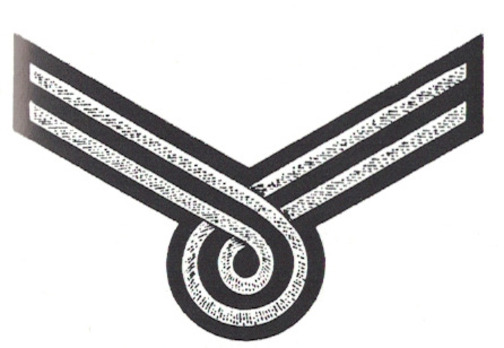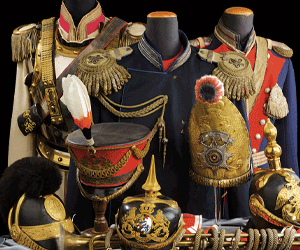DAF 3rd Pattern Kreisobmann & Kreiswerkscharstammführer Sleeve Rank Insignia
SKU: 81.GOR.03.02.04.03.005
Estimated market value:

Estimated market value:
Attributes
History
The DAF (Deutsche Arbeitsfront = German Labour Front) was the result of a forced association of all German trade unions, established on May 10, 1933. Its purpose was the coordination and control of all aspects of German labour to serve the interests of the NSDAP. The DAF leader was Reichsleiter Robert Ley.
The Werkscharen (Factory Brigades) of the DAF were the “soldiers” of the organisation, formed in 1934. They were trained and organised as paramilitary, uniformed units, yet remained unarmed. Beginning in April 1937, active Werkschar units (Stoßtrupps) would wear silver-coloured insignia, while administrators wore gold-coloured insignia. Even though Werkscharen were not affiliated with the Reichsluftschutzbund (RLB, National Air Raid Protection League), during the war they often functioned as factory air raid protection auxiliaries.
Some companies, especially major corporations, used additional security personnel, which were dubbed Werkschutz (Factory Protection), and later Werksicherheitsdienst (Factory Security Service).
It is unknown when DAF sleeve rank insignia were first introduced. They were in use until April 1939 when they were replaced by collar tabs in the style of the NSDAP political collar tabs. More information about them can be found in the NSDAP insignia section.
The third pattern was introduced on June 5, 1937. All of these were worn on the upper right sleeve, except those for the three lowest ranks, Werkscharmeister to Rottenführer, which were worn on the lower right sleeve.
Men in the ranks of Kreisobmann and Kreiswerkscharstammführer wore a downward pointing double chevron with a loop at the bottom. It is gold-coloured on dark blue.


Comments
Sign in to comment and reply.


Scroll Top